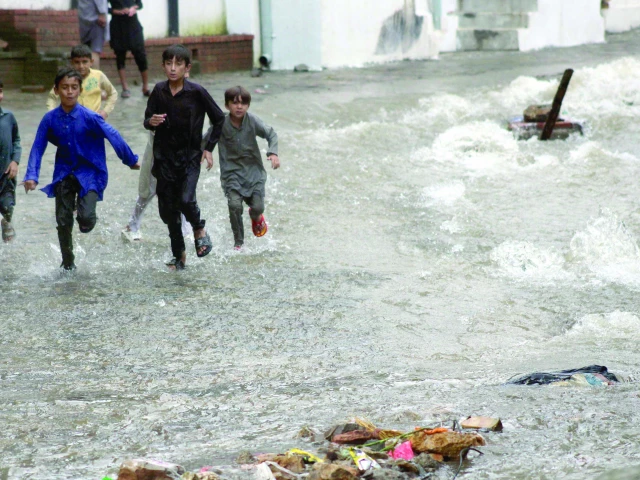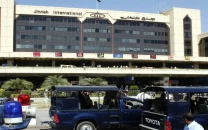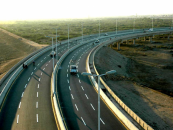Flood risk spurs anti-encroachment drive
Heavy rains in twin cities cause water accumulation in low-lying areas

Heavy rains that began on Monday evening in the twin cities of Rawalpindi and Islamabad continued until Tuesday morning. Low-lying areas in the suburbs were submerged due to water accumulation; however, the water level in Nullah Leh rose only four feet above normal, sparing low-lying areas from flooding.
Similarly, continuous heavy rain in Islamabad has exposed the risks posed by illegal constructions in the Saidpur area. As water flow in local streams intensified, a vehicle was swept into a drain, prompting authorities to accelerate action against encroachments.
According to the spokesman of the ICT administration, the federal capital experienced persistent heavy rains, resulting in increased water flow in the Saidpur streams.
As per the district administration, the surge in water flow was primarily due to illegal constructions that restricted the natural course of the drains. The administration's spokesman confirmed that the continuous rainfall intensified the water current, causing a vehicle to fall into a drain in Saidpur. The authorities later retrieved the vehicle without further incident.
The administration noted that sanitation teams remained active during the rain, ensuring water drainage in low-lying areas. However, the spokesman added that water accumulated in certain areas of Saidpur where encroachments blocked the natural drainage path.
Meanwhile, Islamabad Deputy Commissioner, Irfan Nawaz Memon, visited Saidpur along with the Additional Deputy Commissioner General (ADCG) and other officials to assess the situation on the ground.
During his visit, the deputy commissioner instructed officials to intensify operations against illegal constructions in the area. He said that unauthorised structures have obstructed the flow of rainwater, directly contributing to the risk of urban flooding. "These encroachments have disturbed the natural watercourse, resulting in the accumulation of water in lower areas," Memon said. He further mentioned that the district administration had already issued notices to those responsible for illegal constructions before starting any operation.
"The crackdown against encroachments started only after repeated warnings were ignored," Memon emphasised. He directed that the operation against illegal constructions will continue until the last unauthorised structure is removed. Authorities will wait for the rain to subside before beginning demolition of the remaining illegal buildings, he said. The district administration's spokesman reiterated that the operation in Saidpur will not be stopped until the complete removal of encroachments and stressed that the illegal structures are the main reason behind water accumulation and blockage in the drainage system during rains.
The deputy commissioner assured that all necessary steps will be taken to address the problem permanently. "Until the last illegal construction is removed, the operation will not stop," he affirmed. Authorities have warned that strict action will be taken against those who attempt to obstruct official operations.
The administration is also considering long-term measures to restore the natural water channels in Saidpur and prevent future blockages. With heavy rains forecast to continue, the administration remains on high alert. Field teams are monitoring vulnerable areas while machinery has been deployed to manage water drainage and prevent further damage. The district administration has urged the public to cooperate with officials and avoid constructing any buildings on or near natural watercourses.
According to the Meteorological Department, the highest rainfall in Rawalpindi was recorded at Kutchery Chaklala 85mm, while in Islamabad, Saidpur received the most rain at 74mm. Other rainfall measurements included: Golra 29mm, Bokra 63mm, PMD 32mm, Shamsabad 32mm, Pirwadhai 30mm, Gawalmandi 55mm, and New Katarian 24mm.
In Nullah Leh, the water level reached 9 feet at Katarian and 6 feet at Gawalmandi. As the rain subsided, WASA teams began draining water from low-lying areas.
WASA Managing Director, Muhammad Saleem Ashraf, said that WASA teams, equipped with machinery, remained stationed in vulnerable areas and actively drained water whenever there was a break in the rain.
With additional input from APP






















COMMENTS
Comments are moderated and generally will be posted if they are on-topic and not abusive.
For more information, please see our Comments FAQ